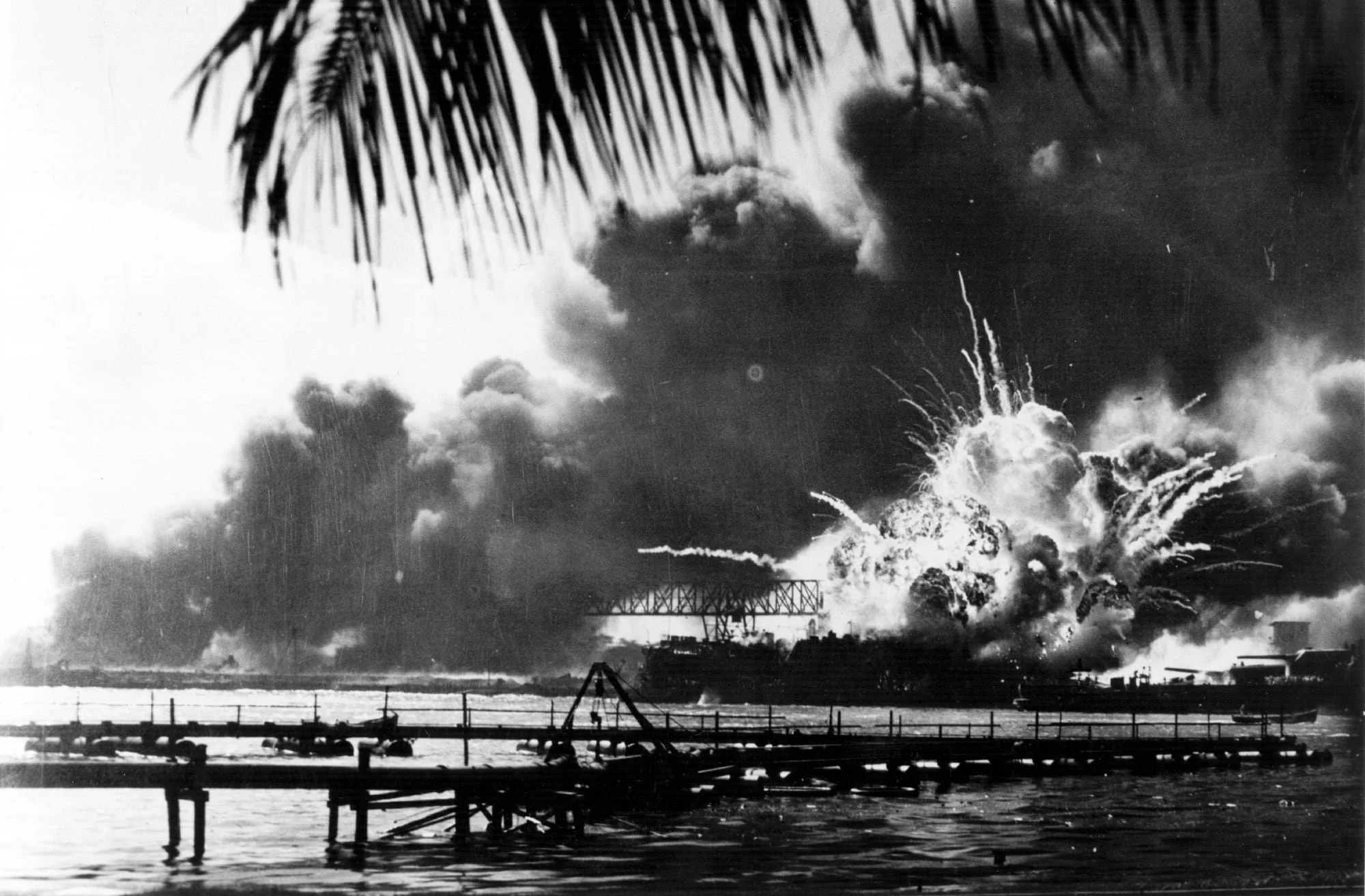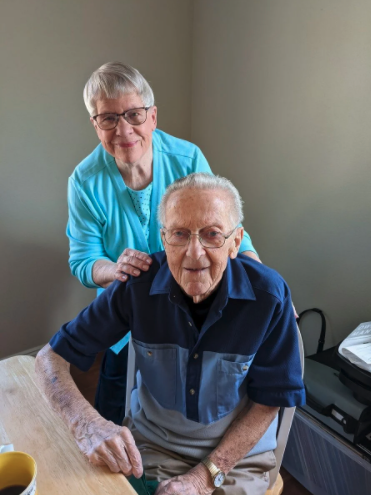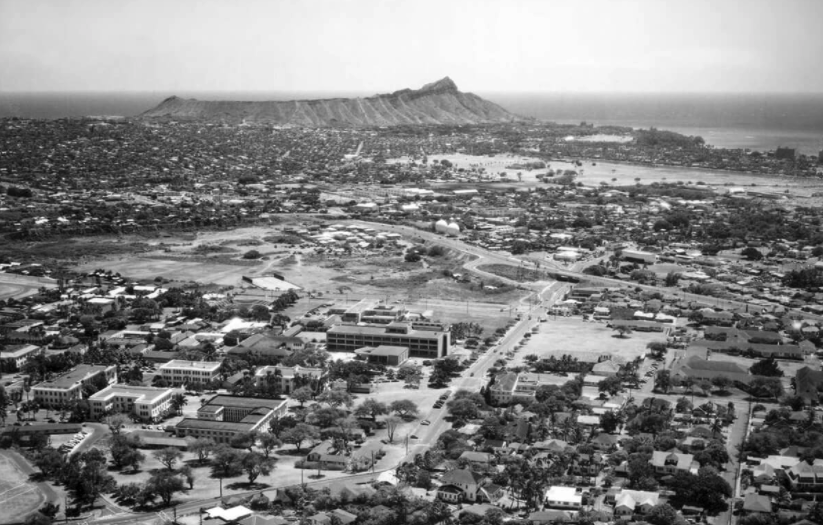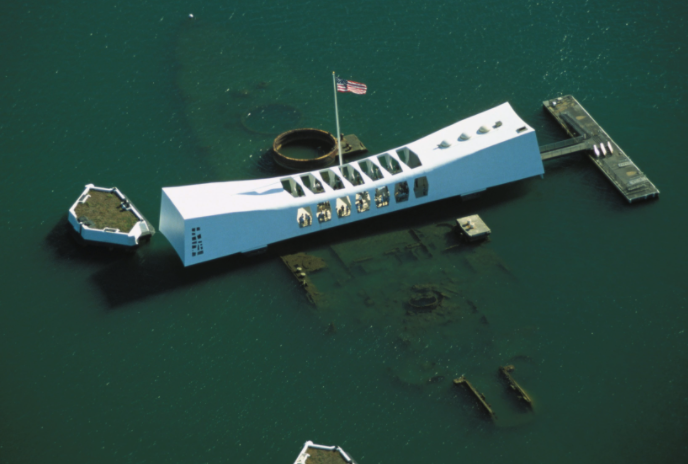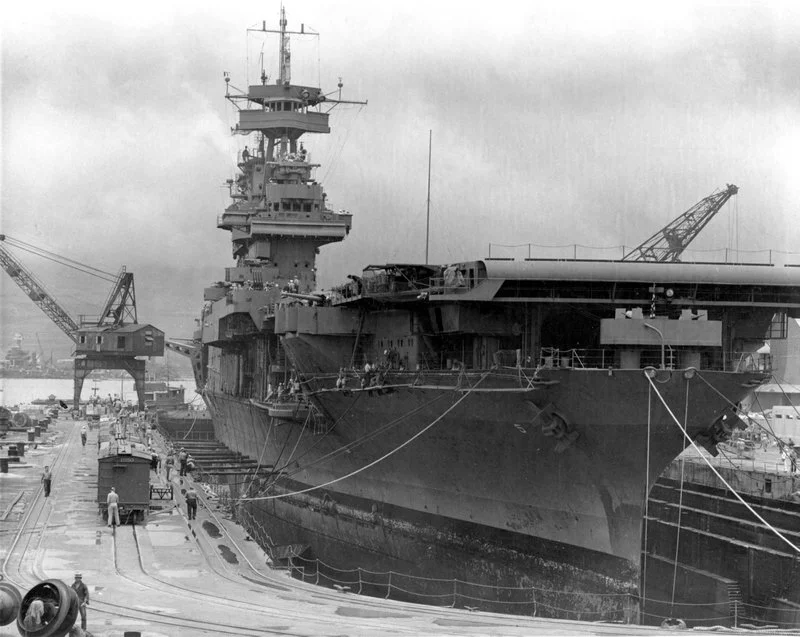Pearl Harbor Attack: Through the eyes of a Child
By Tom Peterson
Beth and Walt Smith of The Dalles. Eighty years ago today, Beth experienced the Pearl Harbor attack. She was 10. Her life on that Island would never be the same.
On Sunday, Dec. 7, 1941, the Rubenson family gathered around the large radio in the family living room.
It was close to 8 a.m.
Joe Rubenson and his wife Charlotte loved to listen to the Mormon Tabernacle Choir on Sundays.
And 10-year-old Beth, their only daughter, sat there beside them.
They were listening to the Choir nestled in their home in the Mānoa Valley near Honolulu on the Hawaiian Island of O’ahu.
They were just 12 miles from Pearl Harbor.
“When we turned on the radio to listen, it came over that we were under attack,” said Beth, now age 90 and living at Flagstone. “And they said it was not a joke, but it was for real that we were being attacked by the Japanese.”
Beth lived here in the Mānoa Valley just 12 miles from Pearl Harbor.
In the months leading up to the attack, President Franklin Roosevelt ordered the entire Pacific Fleet, nearly 100 ships, to Pearl Harbor to deter growing Japanese aggression.
At 7:55 a.m. that morning the first of some 350 Japanese aircraft began their assault on 19 US naval vessels and some 300 US aircraft.
“We had one plane fly over our house,” said Beth, noting the engine noise was so loud they thought it was coming through the windows.
“We ran out onto the porch and the plane came in so low we could see the Japanese pilot look down at us.”
The surprise attack from Japan took just an hour and 15 minutes.
The USS Arizona after being attacked on Dec. 7, 1941.
The USS Arizona Memorial as it is today. The battleship rests on the floor of the harbor.
The attack killed 2,403 U.S. personnel, including 68 civilians, and destroyed or damaged 19 U.S. Navy ships, including 8 battleships. The USS Arizona battleship was destroyed and USS Oklahoma had capsized. The USS West Virginia, USS California and USS Nevada had sunk in shallow water.
Beth knew those ships.
USS Yorktown
“A lot of Sundays prior to the war, my mother played piano at church services on the ships,” she said. “I was on the Arizona and Yorktown and several others ships for church services. Three of those ships were sunk that day.”
At the end of the attack, Beth said they were lost.
“My folks got together with our neighbors and tried to figure out what to do,” she said. “There was nothing to do but sit and wait and see what was going to happen.”
“I remember my mother made vegetable soup.”
Eventually, the Rubensons had 5 or 6 more people in the house and they spent the night, Beth said. One couple was expecting a baby. Her husband worked at the sheriff’s department - and another family with two children stayed with them. “They lived close to the beach, and they did not want to be there,” Beth said.
The Rubensons also had a small house on their property where a Japanese girl lived while attending the University of Hawaii. “She helped around the house and babysat me - on the day of Dec 7, she went away with her boyfriend so fast. She was so frightened. We never heard from her again. She had to be scared out of her wits.”
The US declared war against Japan the next day.
“Everyone was confused and nobody really knew what was happening. We would get short announcements over the radio to stay in our homes and not walk around outside,” Beth said. “I know my mother did not go to work the next day. She worked at the Army and Navy YMCA with the chaplain. It just took a while for people to get organized.”
Beth remembers her dad putting cardboard over the windows to prevent light from escaping and aiding enemy aircraft during the bombing raids.
“That went on for years,” she said.
School changed for her dramatically.
She had attended the private Punahoe School.
“The whole campus was taken over by the US Army Corp of Engineers.”
For a short time, her classes were held at a church before it was moved to the University of Hawaii campus. “I went through the 8th grade there,” she said.
“They dug trenches on campus because of the air raids. They were just open trenches,” she said.
And there was also fear of a chemical attack.
“I carried a gas mask to school every day for two or three years,” she said. “That’s when wearing slacks for women became popular,” providing better skin protection in case of a chemical assault.
“Later on after the war started, we went to Hickam Field (Air Force Base) and there was an air raid siren, and we went to that shelter. That was the most frightening time for me.” You’re stuck and thinking somebody’s going to attack.”
Beth also remembers the solemn day at school when US President Franklin D. Roosevelt died on April 12, 1945.
Vice President Harry S. Truman took the reins, and the development of the nuclear bomb came to fruition after a test near Los Alamos, New Mexico that July.
The US demanded the unconditional surrender of the Japanese with the ultimatum that, if Japan did not surrender, it would face "prompt and utter destruction."
The United States detonated two nuclear weapons over the Japanese cities of Hiroshima and Nagasaki on Aug. 6 and Aug. 9, 1945, respectively. The two bombings are estimated to have killed between 129,000 and 226,000 people, most of whom were civilians. It remains the only use of nuclear weapons in armed conflict.
Beth and Walt Smith in the 1950s.
Japanese Emperor Hirohito surrendered on August 15, 1945, bringing the hostilities of World War II to an end.
“We left (Hawaii) two weeks after World War II was over,” Beth said. Her dad had a job waiting in Pasadena. “We came over by boat to California on Matson Line Ship with 1500 troops.”
“I have never gone back.”
Editor’s Note - Beth (Rubenson) Smith, 90, is married to Walt Smith, 92, a former English Teacher at The Dalles High School. They currently live at Flagstone Senior Living in The Dalles.
They celebrated their 70th wedding anniversary on Nov. 24. Beth worked at Mid-Columbia Center for Living for 17 years. They both retired in 1989.

